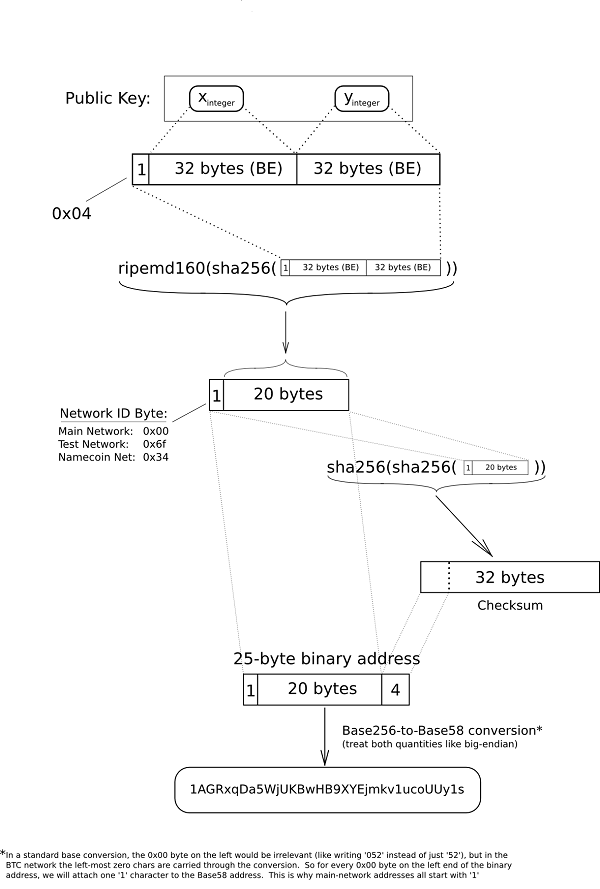Ruby Generate 32 Byte Key
Next, VerSig needs to import the encoded public key bytes from the file specified as the first command line argument and to convert them to a PublicKey. A PublicKey is needed because that is what the SignatureinitVerify method requires in order to initialize the Signature object for verification.
First, read in the encoded public key bytes.
Now the byte array encKey contains the encoded public key bytes.
You can use a KeyFactory class in order to instantiate a DSA public key from its encoding. The KeyFactory class provides conversions between opaque keys (of type Key) and key specifications, which are transparent representations of the underlying key material. With an opaque key you can obtain the algorithm name, format name, and encoded key bytes, but not the key material, which, for example, may consist of the key itself and the algorithm parameters used to calculate the key. (Note that PublicKey, because it extends Key, is itself a Key.)
Suppose there is a method to reset a user's password and it has an argument for the new password. I would like to pass in a random string, in the above code I need a tmp variable, whereas in the single statement examples bellow I can do the whole thing as a one liner. I work on Consul app and I have added on this branche a SSO module to connect from an other website with an encrypted URL create with gem Openssl and class AesEncryptDecrypt class AesEncryptDecr. May 28, 2016 Since ruby/ruby@ce63526 this now has a strict checking on key length. Default to key length 32 bytes, to match the compatible length for aes-256-cbc Fixes rails#25185 This comment has been minimized.
So, first you need a key specification. Microsoft office 2010 professional plus license key generator. You can obtain one via the following, assuming that the key was encoded according to the X.509 standard, which is the case, for example, if the key was generated with the built-in DSA key-pair generator supplied by the SUN provider:
Ruby Generate 32 Byte Key Code
Now you need a KeyFactory object to do the conversion. That object must be one that works with DSA keys. Computer freeze when key generator.
Finally, you can use the KeyFactory object to generate a PublicKey from the key specification.
Key generators are constructed using one of the getInstance class methods of this class.
KeyGenerator objects are reusable, i.e., after a key has been generated, the same KeyGenerator object can be re-used to generate further keys.

There are two ways to generate a key: in an algorithm-independent manner, and in an algorithm-specific manner. The only difference between the two is the initialization of the object:
- Algorithm-Independent Initialization
All key generators share the concepts of a keysize and a source of randomness. There is an
initmethod in this KeyGenerator class that takes these two universally shared types of arguments. There is also one that takes just akeysizeargument, and uses the SecureRandom implementation of the highest-priority installed provider as the source of randomness (or a system-provided source of randomness if none of the installed providers supply a SecureRandom implementation), and one that takes just a source of randomness.Since no other parameters are specified when you call the above algorithm-independent
initmethods, it is up to the provider what to do about the algorithm-specific parameters (if any) to be associated with each of the keys. - Algorithm-Specific Initialization
For situations where a set of algorithm-specific parameters already exists, there are two
initmethods that have anAlgorithmParameterSpecargument. One also has aSecureRandomargument, while the other uses the SecureRandom implementation of the highest-priority installed provider as the source of randomness (or a system-provided source of randomness if none of the installed providers supply a SecureRandom implementation).
In case the client does not explicitly initialize the KeyGenerator (via a call to an init method), each provider must supply (and document) a default initialization.
Every implementation of the Java platform is required to support the following standard KeyGenerator algorithms with the keysizes in parentheses:
Ruby Generate 32 Byte Key Download
- AES (128)
- DES (56)
- DESede (168)
- HmacSHA1
- HmacSHA256